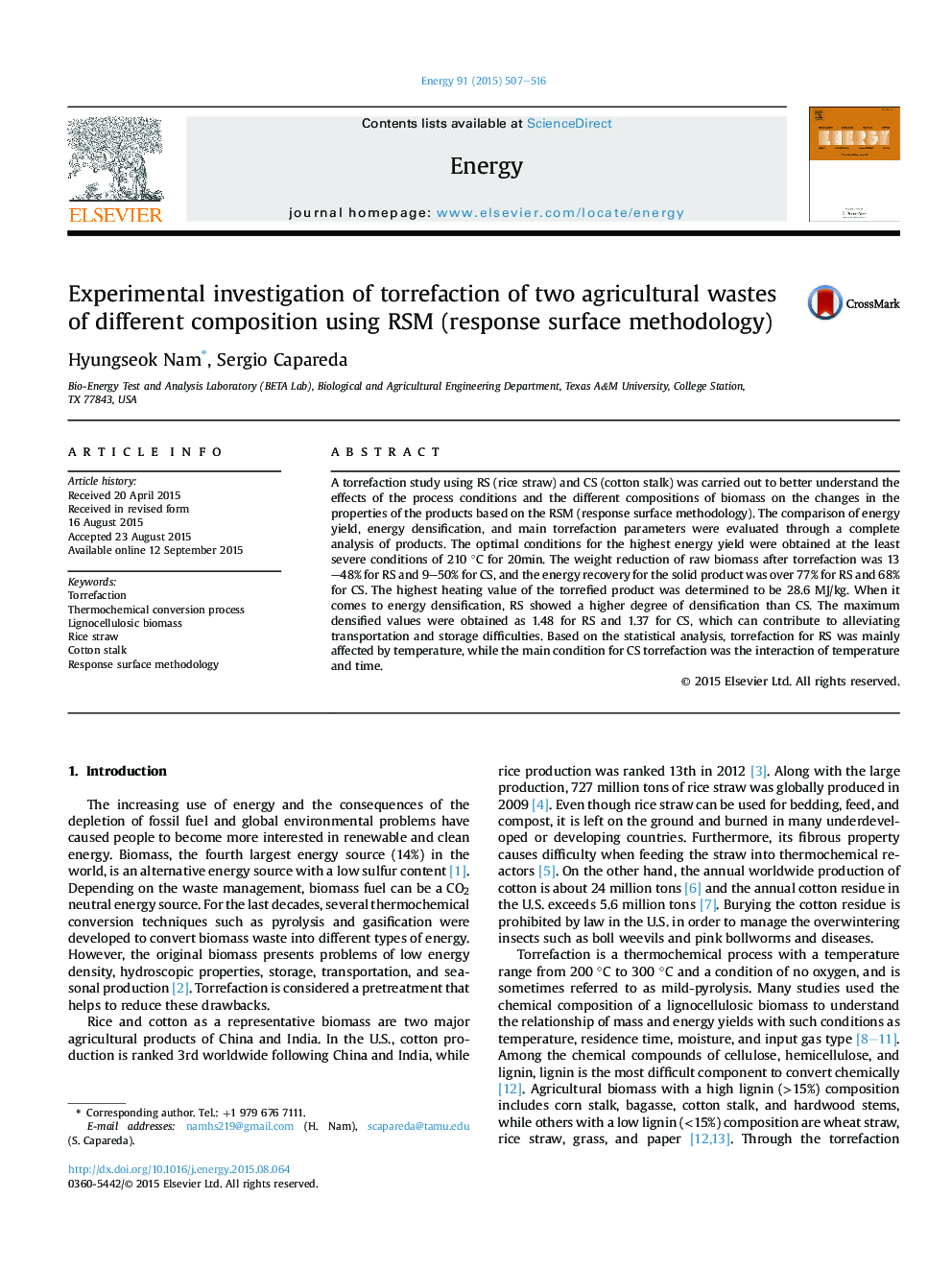| Article ID | Journal | Published Year | Pages | File Type |
|---|---|---|---|---|
| 1731511 | Energy | 2015 | 10 Pages |
•Straw and woody type containing different lignin content processed via torrefaction.•Empirical models were developed based on the RSM (surface response methodology).•A higher energy densification of RS was determined compared to that of CS.•A reduction in weight of 9–50% was achieved, whilst maintaining an energy of 68–99%.•The torrefaction by-products of liquid and gas were also comprehensively evaluated.
A torrefaction study using RS (rice straw) and CS (cotton stalk) was carried out to better understand the effects of the process conditions and the different compositions of biomass on the changes in the properties of the products based on the RSM (response surface methodology). The comparison of energy yield, energy densification, and main torrefaction parameters were evaluated through a complete analysis of products. The optimal conditions for the highest energy yield were obtained at the least severe conditions of 210 °C for 20min. The weight reduction of raw biomass after torrefaction was 13–48% for RS and 9–50% for CS, and the energy recovery for the solid product was over 77% for RS and 68% for CS. The highest heating value of the torrefied product was determined to be 28.6 MJ/kg. When it comes to energy densification, RS showed a higher degree of densification than CS. The maximum densified values were obtained as 1.48 for RS and 1.37 for CS, which can contribute to alleviating transportation and storage difficulties. Based on the statistical analysis, torrefaction for RS was mainly affected by temperature, while the main condition for CS torrefaction was the interaction of temperature and time.
